How Coffey Architects and Compac joined forces to design a quartz table
For Wallpaper* Handmade 2018, we challenged Coffey Architects and marble and quartz manufacturer Compac to create a hybrid design inspired by the theme of wellness. Here, we go behind the scenes to find out how the Stepwell table was bought to life

London-based Coffey Architects and Spanish marble and quartz manufacturer Compac teamed up for Wallpaper* Handmade ‘Wellness and Wonder’ to create the Stepwell table, a meditative monument with a window into another world at its base. The stoic form is an art piece, inspired by the Chand Baori in Jaipur, India where hundreds of layered steps lead down to a cool pool of healing water – a respite in the heat and a sculptural edifice in its own right.
For Michael Henriksen, architect at Coffey Architects, the Stepwell table was an opportunity and a challenge. Usually working on residential buildings, Coffey Architects wanted to create a beautiful conceptual object that could also be something practical and useful to the domestic environment. The result was a piece of sturdy craftsmanship, that investigates the properties of light and mass: ‘light is always the starting point,’ says Henriksen of all his work at Coffey Architects.
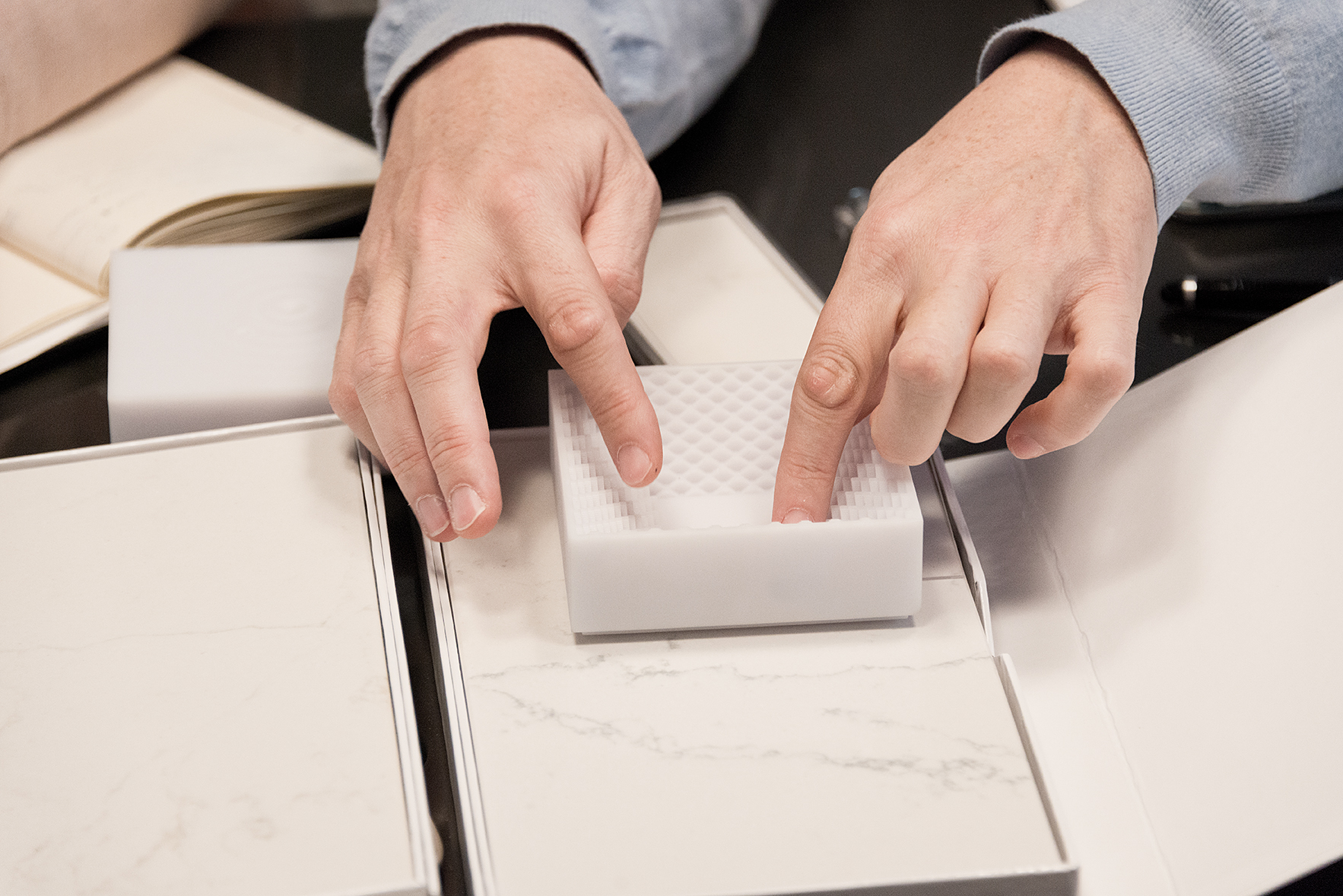
Wallpaper* teamed Coffey Architects with Compac, a manufacturer based in Spain and Portugal. Henriksen presented eight different designs to the company, each modelled around the theme of ‘Wellness and Wonder’, and after discussions with the Compac designers and craftmen. Henrikson then refined the design of the Stepwell table, and packed the model to take to Compac's HQ and production site in Valencia.
In Valencia, Compac led the Coffey design team on a workshop tour, and flicked through sketch books together in the open-plan office and its smooth, bright working surfaces. Henriksen describes Paco Sanchis, CEO at Compac, as the ‘Steve Jobs of surfaces’. ‘There was a clear challenge in how the piece would be made, but we could see the Compac team was determined to do it,’ he says.
I like the idea of creating space in furniture and questioning how to inhabit something solid
A white and grey-coloured variation of Calcutta quartz was selected for the main material – a slight mottle to soften the effect of the surface was simple, yet not too expressive, to allow focus to be rested on the stepped nature of the form. At the heart, the ‘pool' of healing water is represented by a green coloured material, ‘Compac Ice’ that just entered Compac’s production.
To create the design, the thickness of the sheets of quartz had to be tested to see if it could create the desired effect of the delicate steps building up to create the Chand Baori in miniature. From the standard 20mm thickness, Compac refined the material down to just 6mm thickness, to allow light to seep gently through the material. ‘They are artists who have to be really technical,' says Henriksen of the Compac design team.

‘There's a mini architecture inside, it draws you in and over to look inside. Carving is an idea we explored a lot with this design, I like the idea of creating space in furniture and questioning how to inhabit something solid.'
The Stepwell table conceals a playful sense of illusion within its form through the layering of sheets of the quartz. While it appears solid (and is certainly heavy, weighing 200kg), light floods through the material from the LED acrylic centre creating an even, calming glow.
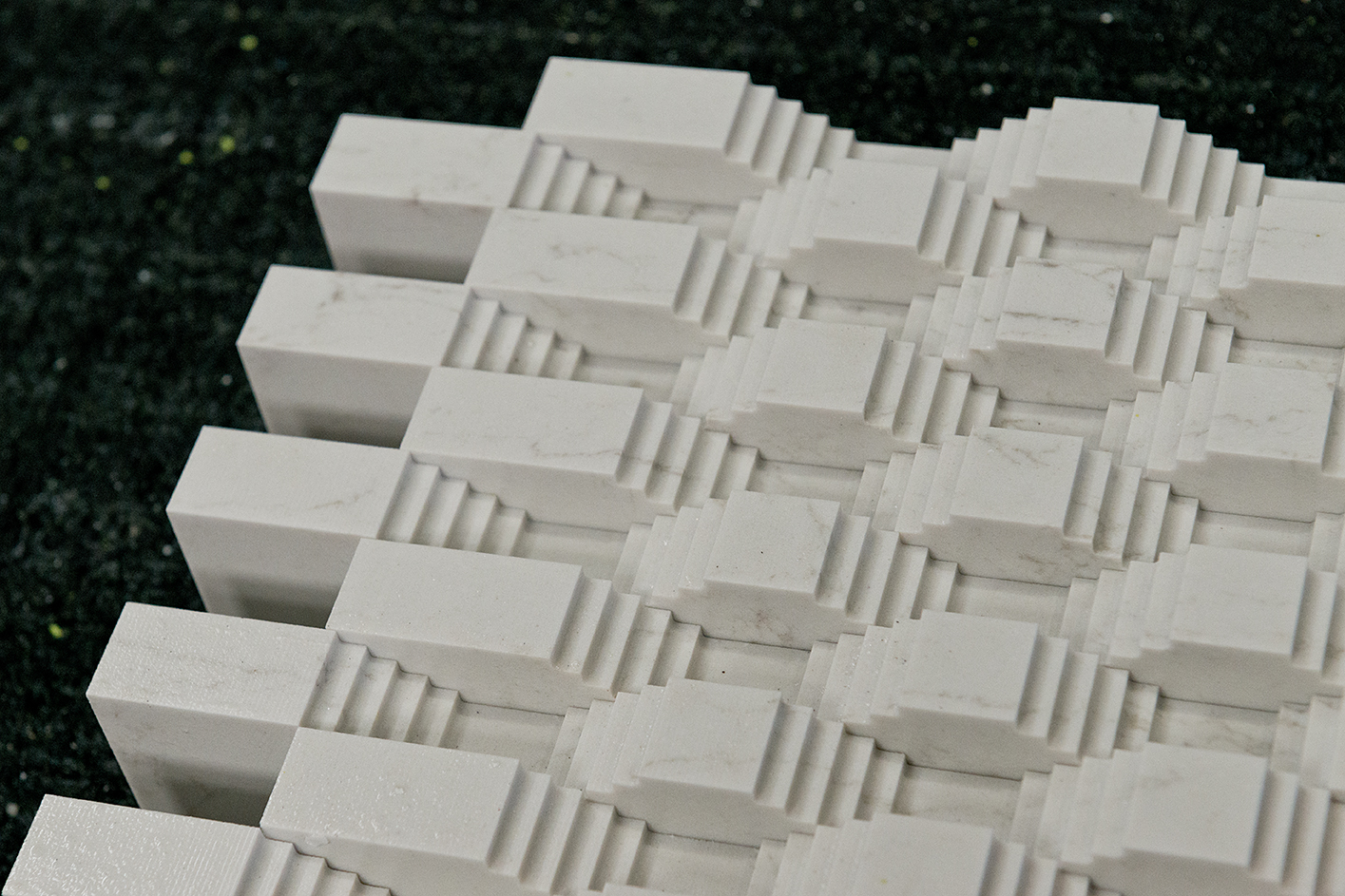
Danish-born Henriksen has been working at Coffey for nine years, mainly focusing on residential schemes, although recently projects have been getting bigger, such as a research centre at the Science Museum, and a university library extension. The studio like to try their hand at experimental projects too – they recently created a window display for the Smeg Picadilly Circus store that cast shadows onto the pavement, and also designed a playful concrete and timber doll's house for a charity auction for disabled children.
‘For a long time I have been keen to explore products. With my Scandinavian background, I’ve looked a lot to midcentury architects like Arne Jacobsen, who designed everything from taps to furniture, not to mention some of the greatest buildings – I like the idea of total design.'
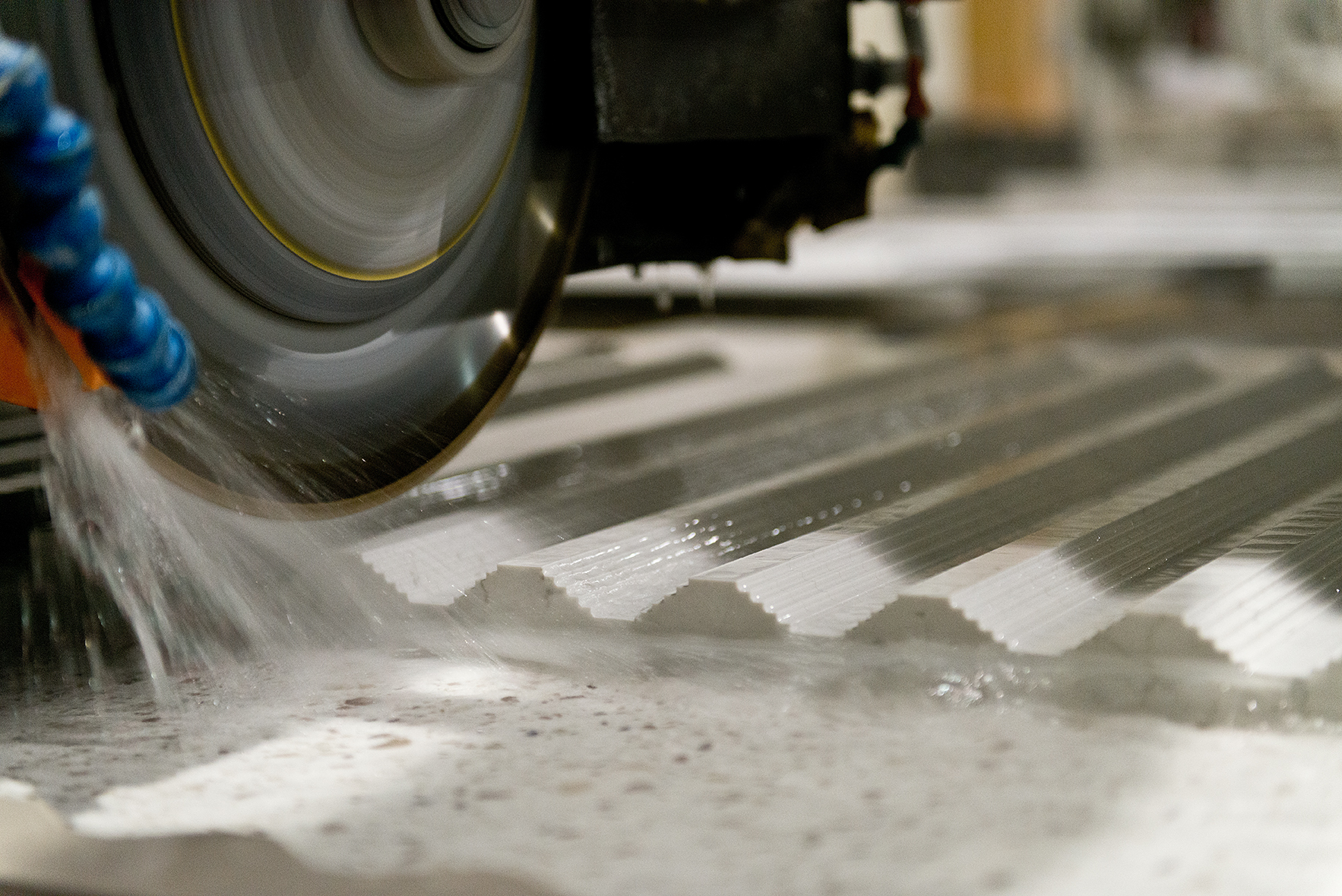


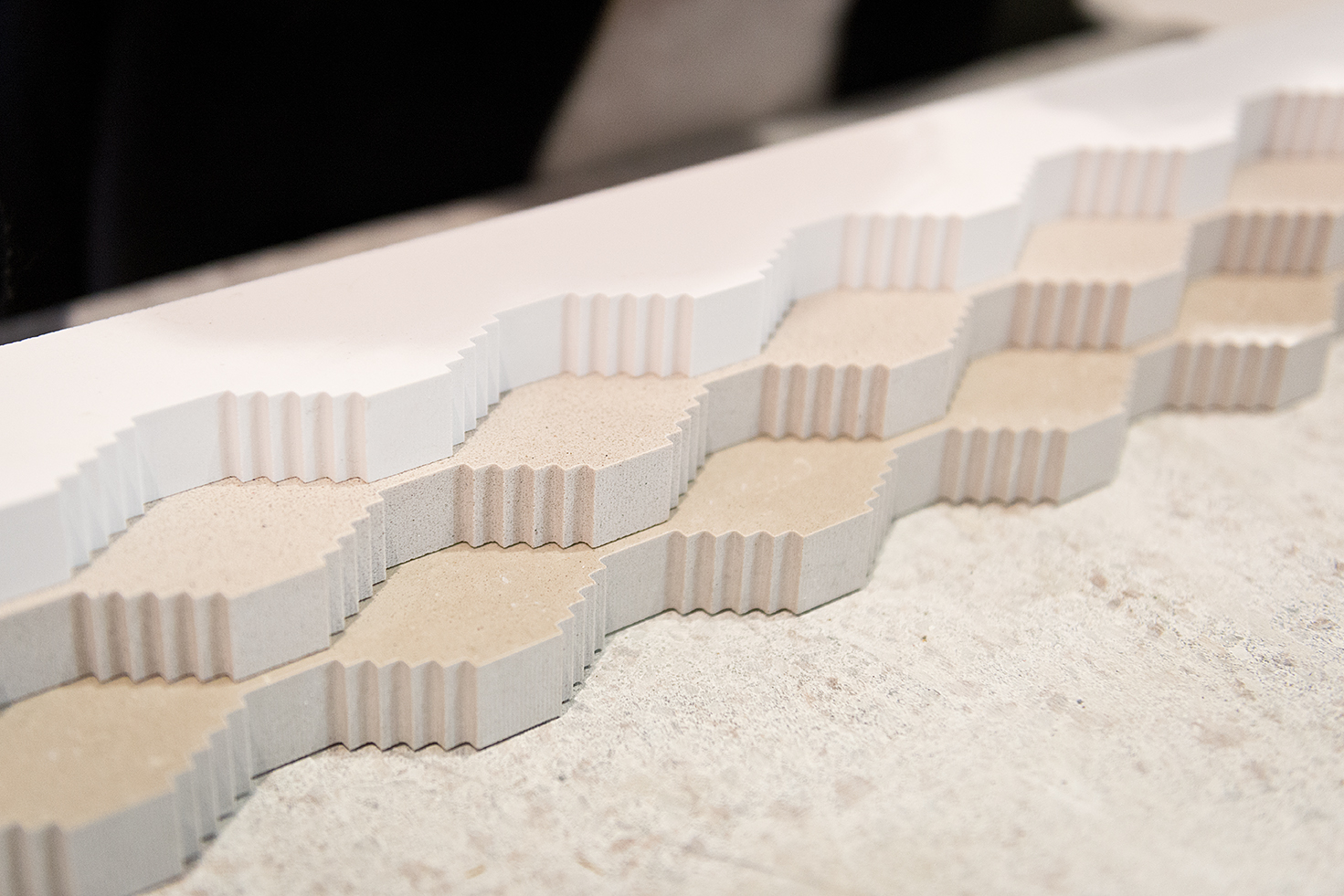
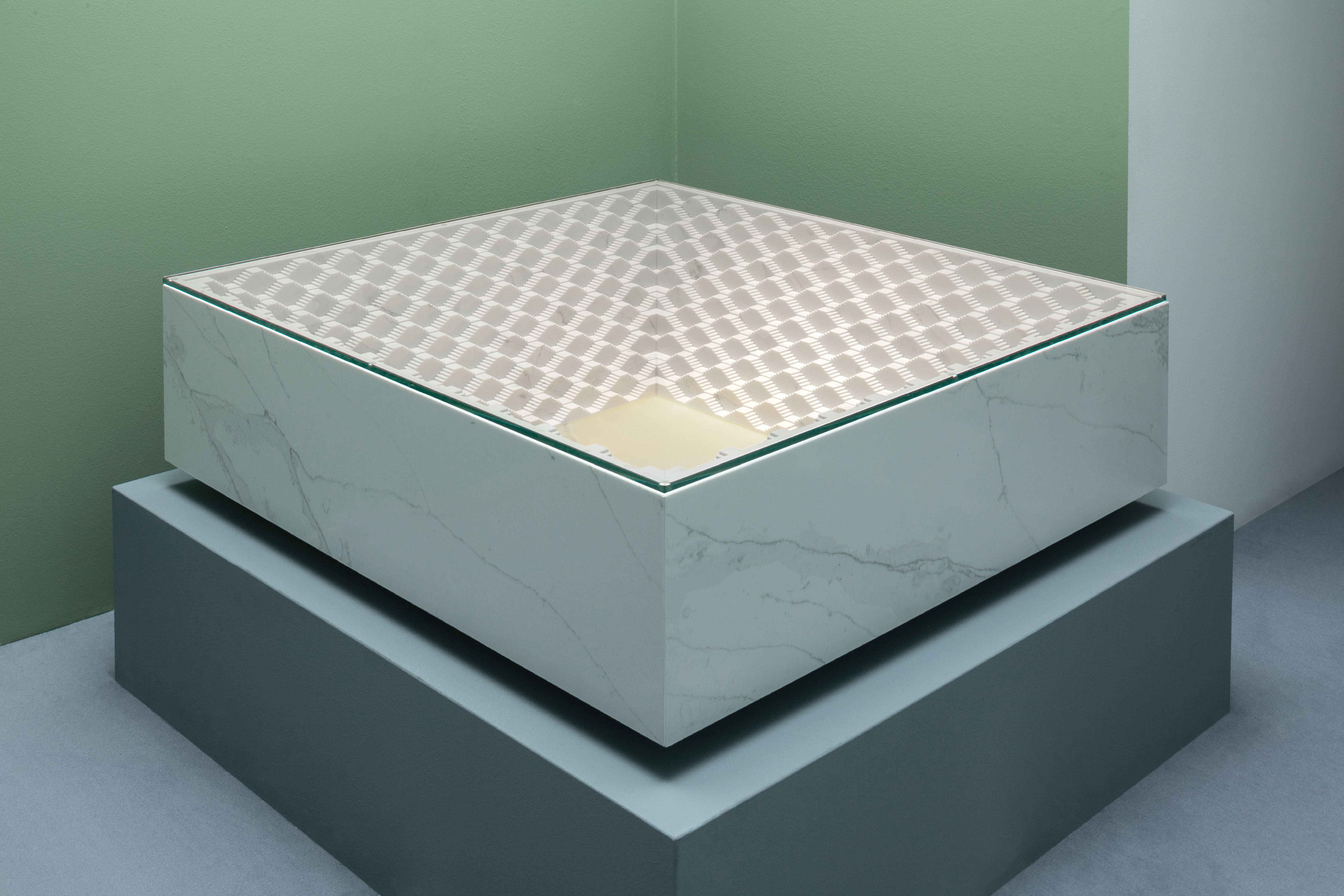
INFORMATION
For more information, visit the Coffey Architects website and the Compac website
Receive our daily digest of inspiration, escapism and design stories from around the world direct to your inbox.
Harriet Thorpe is a writer, journalist and editor covering architecture, design and culture, with particular interest in sustainability, 20th-century architecture and community. After studying History of Art at the School of Oriental and African Studies (SOAS) and Journalism at City University in London, she developed her interest in architecture working at Wallpaper* magazine and today contributes to Wallpaper*, The World of Interiors and Icon magazine, amongst other titles. She is author of The Sustainable City (2022, Hoxton Mini Press), a book about sustainable architecture in London, and the Modern Cambridge Map (2023, Blue Crow Media), a map of 20th-century architecture in Cambridge, the city where she grew up.
-
 ‘I want to bring anxiety to the surface': Shannon Cartier Lucy on her unsettling works
‘I want to bring anxiety to the surface': Shannon Cartier Lucy on her unsettling worksIn an exhibition at Soft Opening, London, Shannon Cartier Lucy revisits childhood memories
-
 What one writer learnt in 2025 through exploring the ‘intimate, familiar’ wardrobes of ten friends
What one writer learnt in 2025 through exploring the ‘intimate, familiar’ wardrobes of ten friendsInspired by artist Sophie Calle, Colleen Kelsey’s ‘Wearing It Out’ sees the writer ask ten friends to tell the stories behind their most precious garments – from a wedding dress ordered on a whim to a pair of Prada Mary Janes
-
 Year in review: 2025’s top ten cars chosen by transport editor Jonathan Bell
Year in review: 2025’s top ten cars chosen by transport editor Jonathan BellWhat were our chosen conveyances in 2025? These ten cars impressed, either through their look and feel, style, sophistication or all-round practicality
-
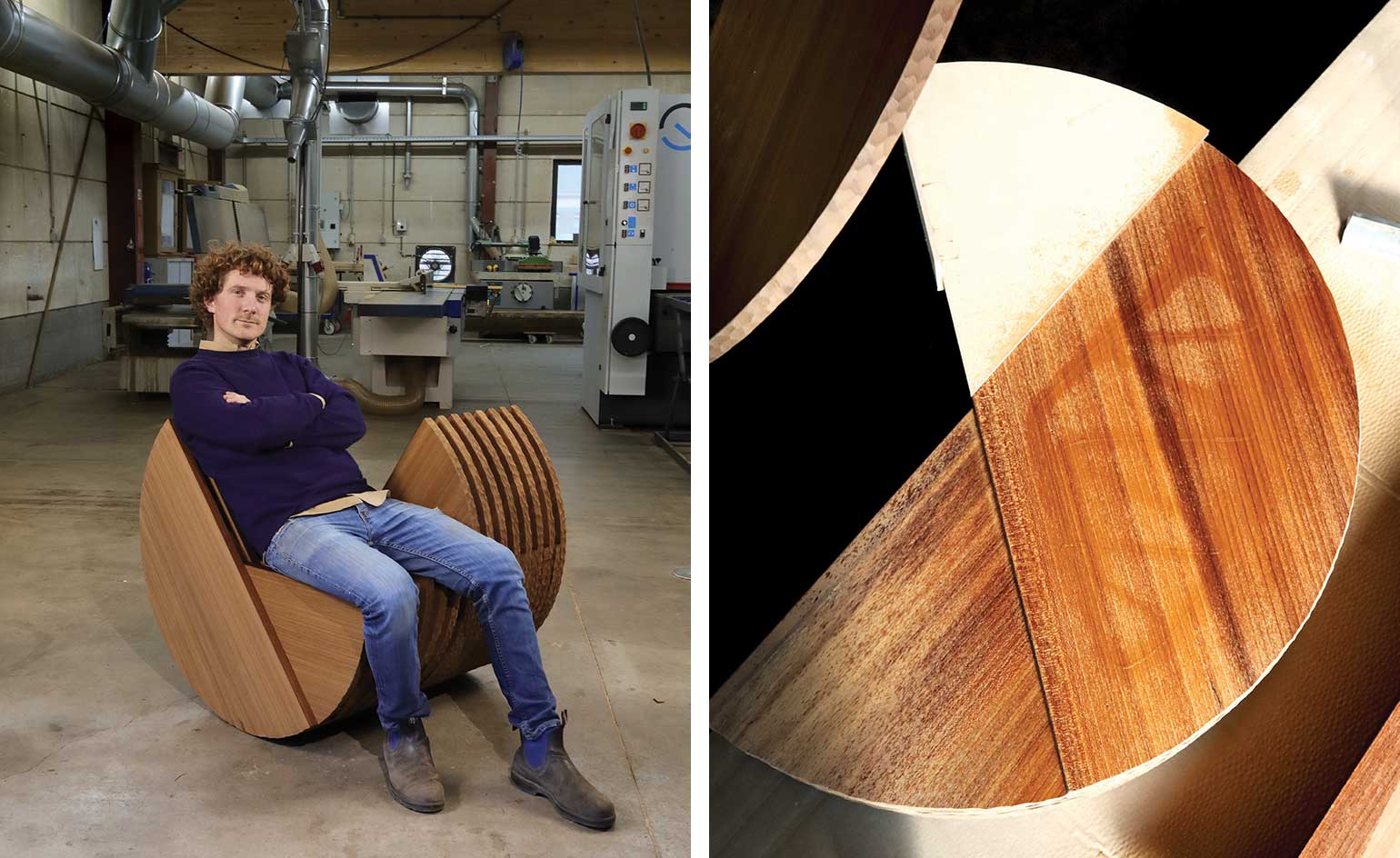 Pitch perfect: ‘Love Rocker’, by Owen Bullett Studio and Heerenhuis
Pitch perfect: ‘Love Rocker’, by Owen Bullett Studio and HeerenhuisFor Wallpaper* Handmade X, sculptor Owen Bullett and table manufacturers Heerenhuis devised a rocking chair for two
-
 Wet set: ‘Three Isles’ birdbaths, by Teo Yang Studio and Huguet
Wet set: ‘Three Isles’ birdbaths, by Teo Yang Studio and Huguet -
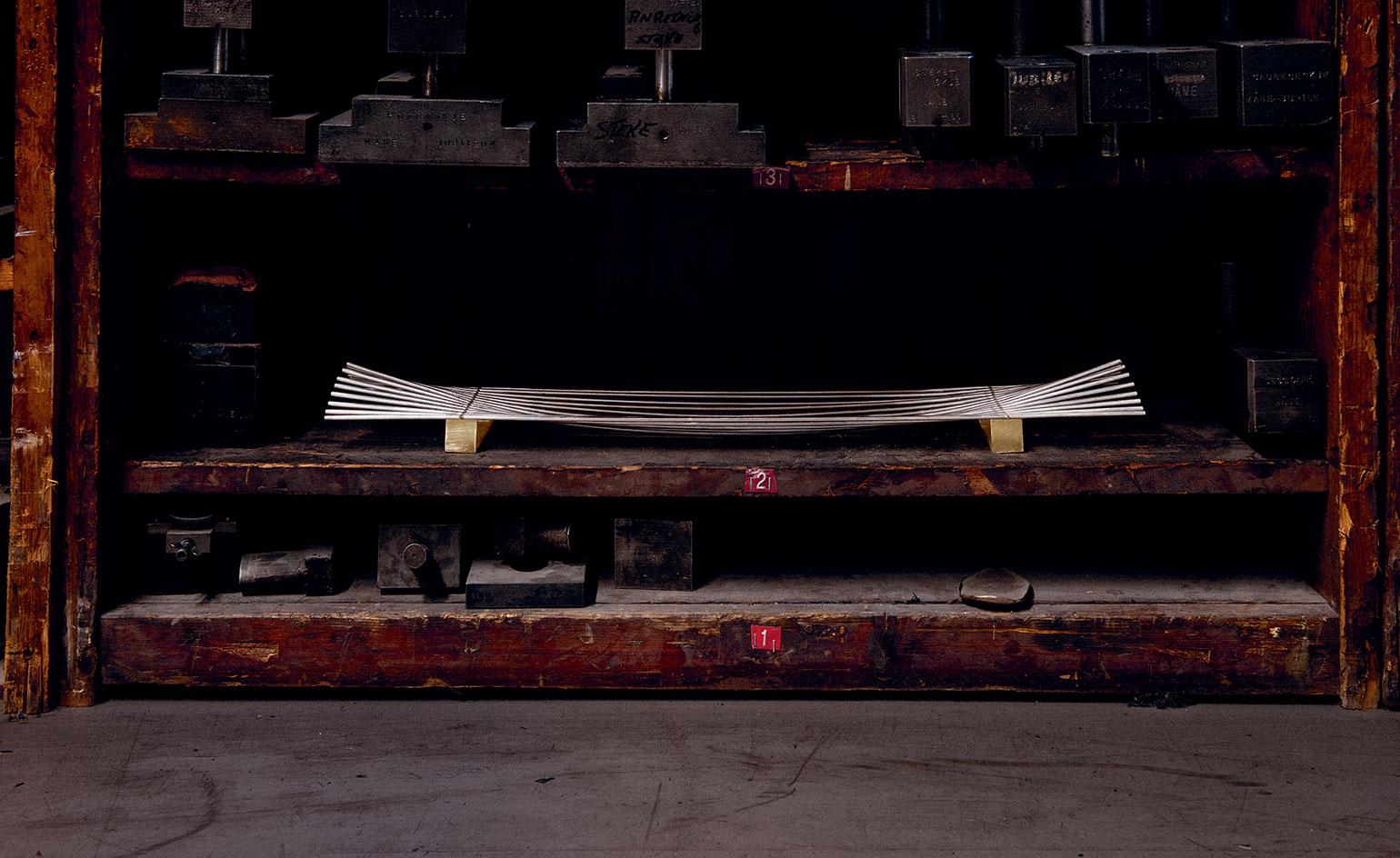 Artisanal precision is at the core of the ‘Arched’ centrepiece
Artisanal precision is at the core of the ‘Arched’ centrepieceFor Wallpaper* Handmade X, Norwegian silver manufacturer Arven and Design Academy Eindhoven graduate Guglielmo Poletti design a seemingly simple ‘conversation piece’
-
 Lars Beller Fjetland and Bottega Ghianda craft love birds
Lars Beller Fjetland and Bottega Ghianda craft love birdsFor Wallpaper* Handmade X, Norwegian designer Lars Beller Fjetland and Italian workshop Bottega Ghianda translated the romantic symbolism of the duck into ‘Amaranth’, a series of stylised bird figurines
-
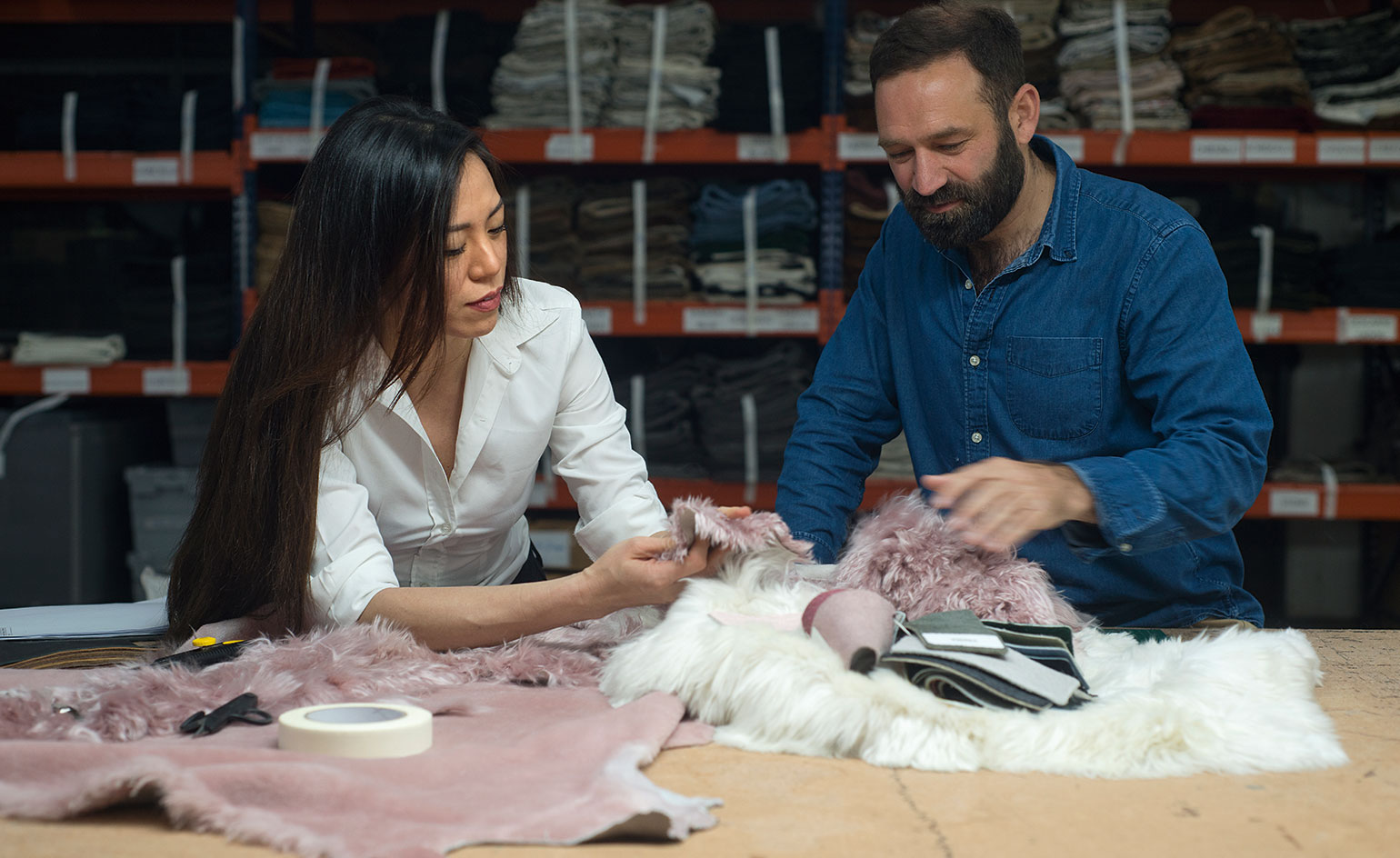 We're tickled pink by Design Haus Liberty and Yerra's Peruvian alpaca picnic set
We're tickled pink by Design Haus Liberty and Yerra's Peruvian alpaca picnic setLuxury rug maker Yerra and architecture studio Design Haus Liberty humanely sourced the finest Peruvian alpaca fur for ‘Isla’ – an ethical and sustainable Wallpaper* Handmade X project
-
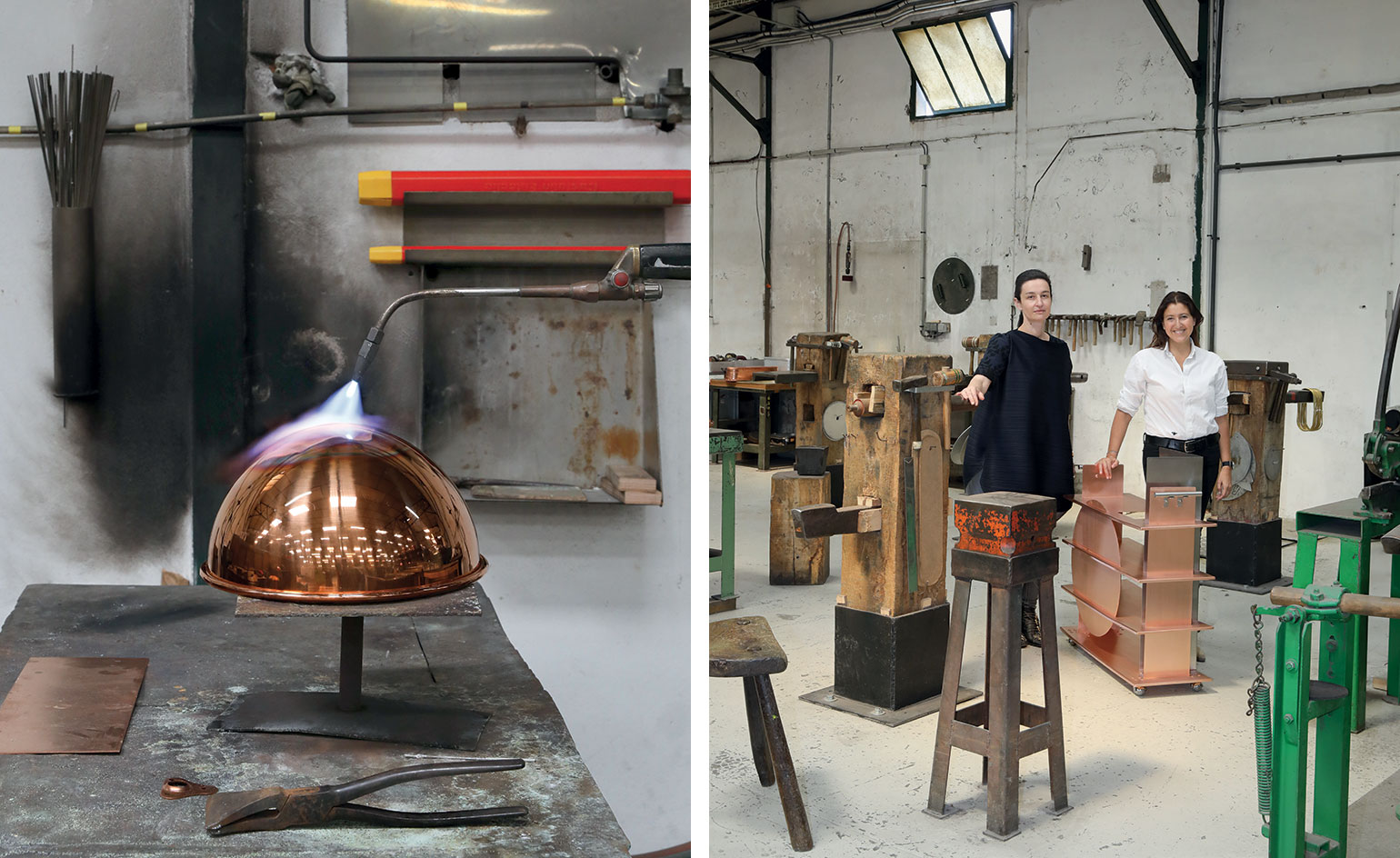 Special brew: ‘Rising Sun’ tea cart, by Isabelle Stanislas and Mauviel
Special brew: ‘Rising Sun’ tea cart, by Isabelle Stanislas and Mauviel -
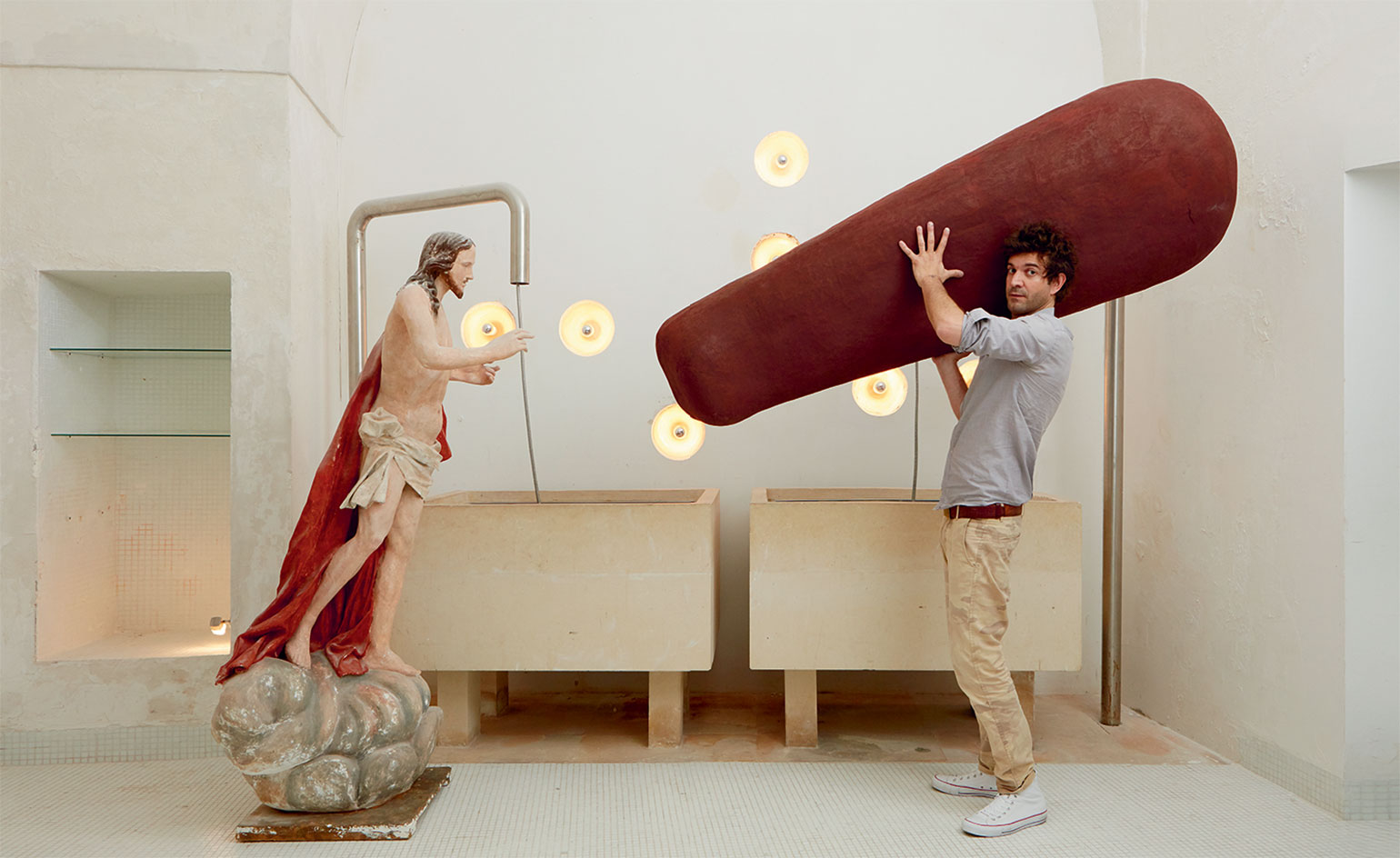 Buried treasure: sustainable sarcophagus, by Tom Dixon and Paper Factor
Buried treasure: sustainable sarcophagus, by Tom Dixon and Paper Factor -
 Heaven’s gate: ‘The Portal’, by Snøhetta, Erik Jørgensen Møbelfabrik and Everything Elevated
Heaven’s gate: ‘The Portal’, by Snøhetta, Erik Jørgensen Møbelfabrik and Everything Elevated